The founder of shoe brand Floriwonne, Nobuaki Fujisawa, was born in Japan with the nickname Fg-trente, of which the meaning is color magician. There is no doubt that Nobuaki is the first and best shoe patina artist, the Japanese male version of Olga Berluti.

Most people think finishing especially patina is an addon for bespoke shoes, but Nobuaki went the other way around. Very interesting path, but also a very dedicated and passionate shoemaker.
What was your experience before becoming a patina artist/shoemaker?
After graduating from university with a major in dental technology, I got a job at a company that manufactured teeth. The number of teeth required to be completed per day was too large! From early morning to midnight, I simply couldn’t meet my quota. After a year of perseverance, I quit my job because I worked too hard and didn’t rest at all. I transplanted the technique of making teeth into shoemaking.
Dental Technique?
Yes, in last making and medallion pattern making, it can be embodied, and if this is an MTO, the requirements will be done.
After resigning, I decided to try something different. In the beginning, I chose to work part-time at the resort hotel, and I traveled to many counties. I ended up working as a waiter at a hotel in Tokyo, and the salary was very high, so I could afford to live. Then I can try something I like. I’ve always loved suits and shoes, but I never thought I’d make my own shoes. Then, I came across World Footwear Gallery. I felt it was a call of fate, so I moved from the hotel industry into shoemaking trade.
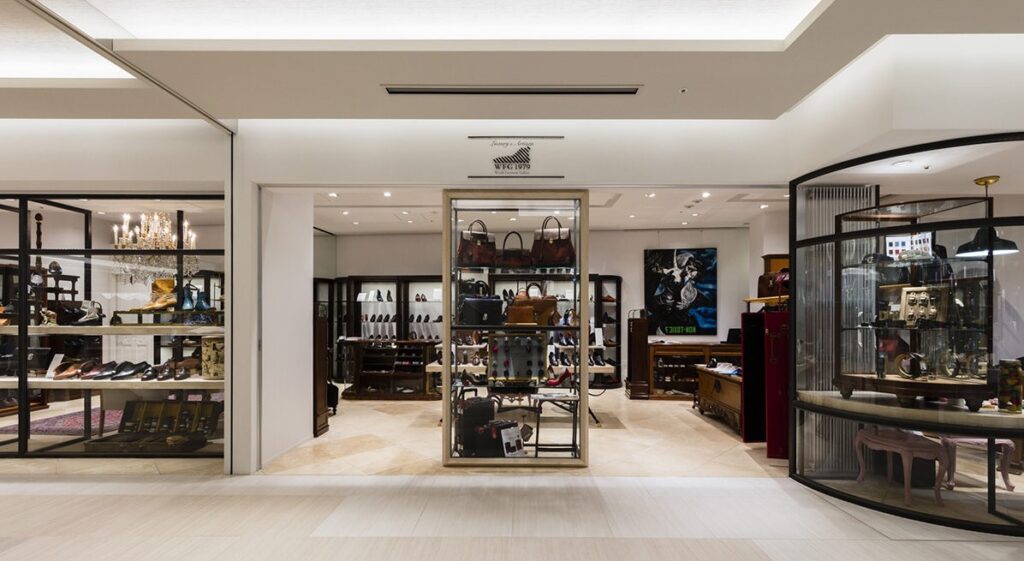
After joining the World Footwear Gallery, how did you come up with the art of color polishing?
I didn’t want to only shoes, but also to be involved in shoe making. At lunchtime, my colleagues and I would go to the vintage shops to look at the clothes. The color of the old shoes feels very dull, and the delicate texture of the leather shoes cannot be reflected.
Compare suits and leather shoes, when the suit is old, it will lose its luster, and you can’t do anything, but the shoes can be reborn with shoe cream and color.
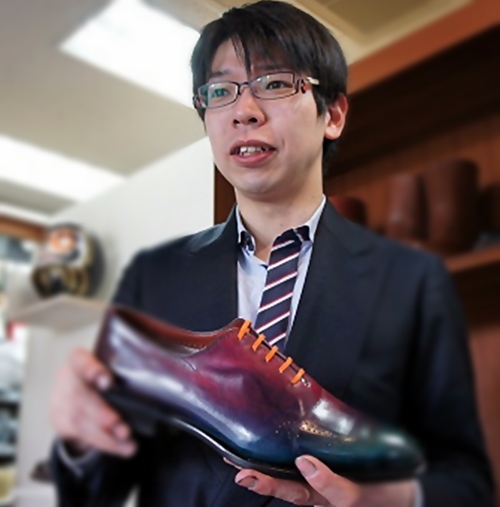
Old shoes gave you the idea of patina, but how did you get started?
This had to do with shoe care brand La Cordonnerie Anglaise.
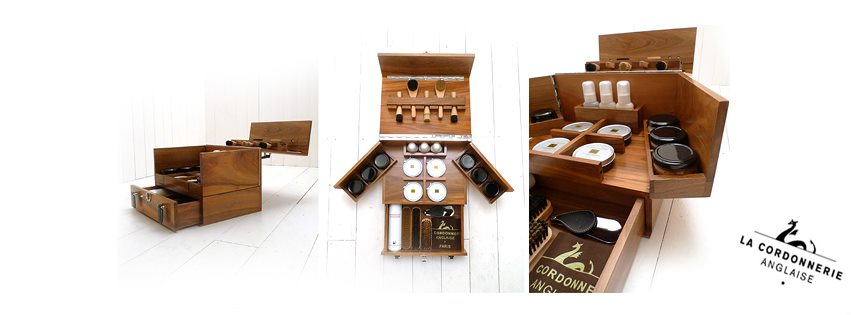
Once, Ms. Leslie from the brand came to our store and gave a lecture to teach the basics of patina. I attended this course and was shocked to learn that leather can be re-dyed.
In the days after attending this course, I was fascinated to study Berluti’s patina. In Japan, there are no craftsmen who specialized in patina. I had to go to the dyeing class where I dyed kimono, accumulated knowledge of dyeing, and then I expressed it in my own way.
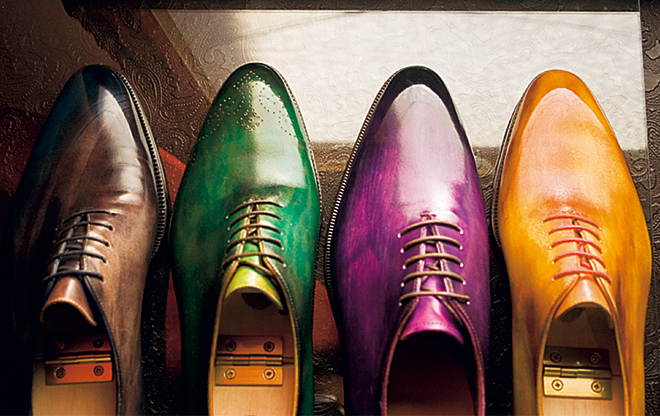
There are no textbooks for leather dyeing, so I tried everything, even ballpoint pens (!) )。
Of course, my self-study environment was also very good. At the World Footwear Gallery, a lot of customers bought new shoes and left their old shoes there, and I practiced with those discarded shoes.
How did you join Columbus?
One day, Columbus’ head came to World Footwear Gallery and saw me painting a pair of shoes, and he asked if I would like to work with him.
In fact, I was happy selling shoes at World Footwear Gallery, and I didn’t know what to do.
I thought about it for about half a year and decided to work at Columbus. Then I embarked on a path to improve my skills there.
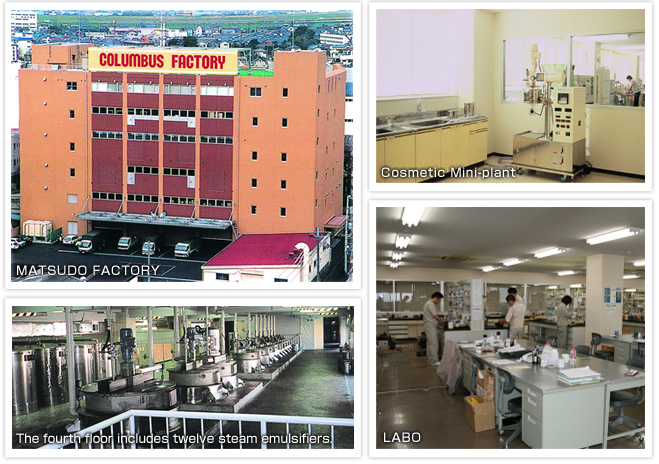
What did you do at Columbus?
I work at Columbus booth in Isetan Shinjuku. The job is shoe shining and patina. The head of Columbus told me that I could use any material I wanted, so I tried everything. But even though I had all the materials, I couldn’t change color A to color B. Regarding this, Columbus did not have such a product at that time, and other manufacturers did not have it, so I had to learn to develop it myself.
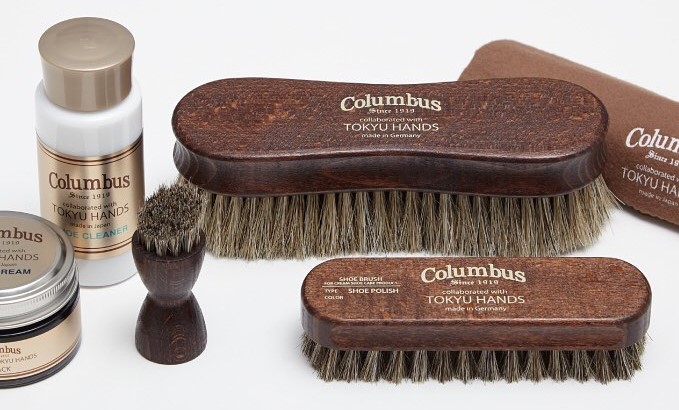
There were so many times of failure and I sometimes failed to deliver to customers with perfect condition. Luckily, I always had the opportunity to practice.
My patina caught the attention of the president of Columbus, who then launched Bootblack brand based on my development.
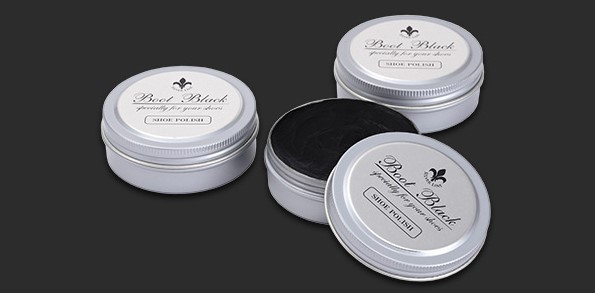
How did you build the Floriwonne brand?
I chose to work at Columbus because I wanted to establish my patina technique as soon as possible. My plan was to stay for three years, but I worked there for eight years!
My thinking was gradually changing, instead of painting shoes that customers buy, it is better to sell the shoes that have been painted to customers. Luckily, over eight years, I’ve worked with a lot of people to make this process happen, like Ann Shoemaker.
I thought the time was ripe and decided to become independent.
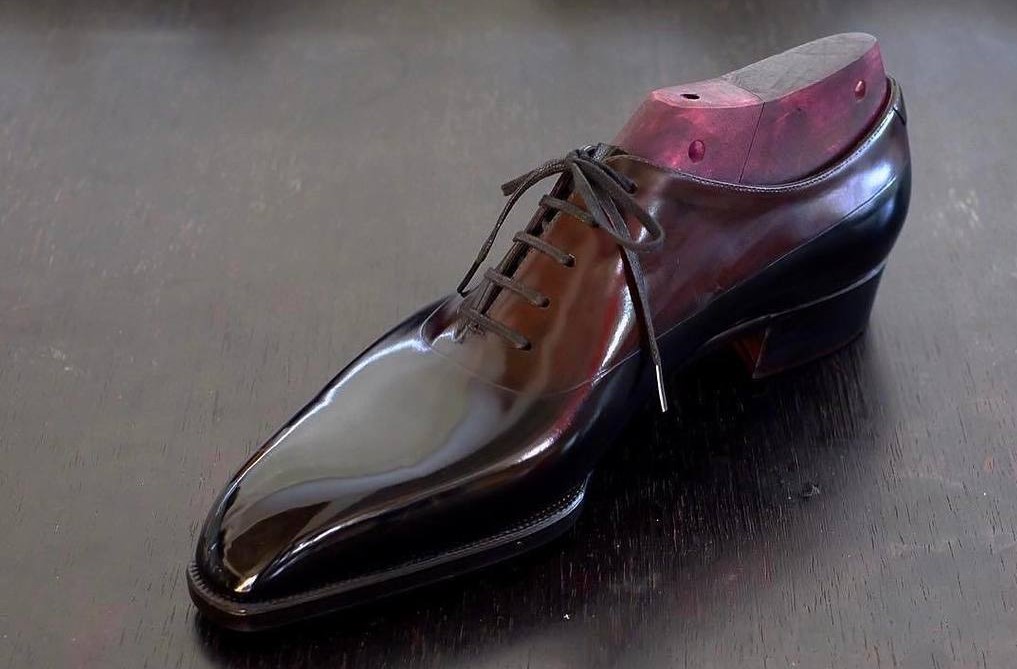
What does the brand name Floriwonne mean?
The Latin word for flower is Flori, and wonne means happiness in German. Combined, it is the joy of those next to the flowers.
Floriwonne shoes not only look gorgeous but are also comfortable. When you wear it, you should be full of joy.
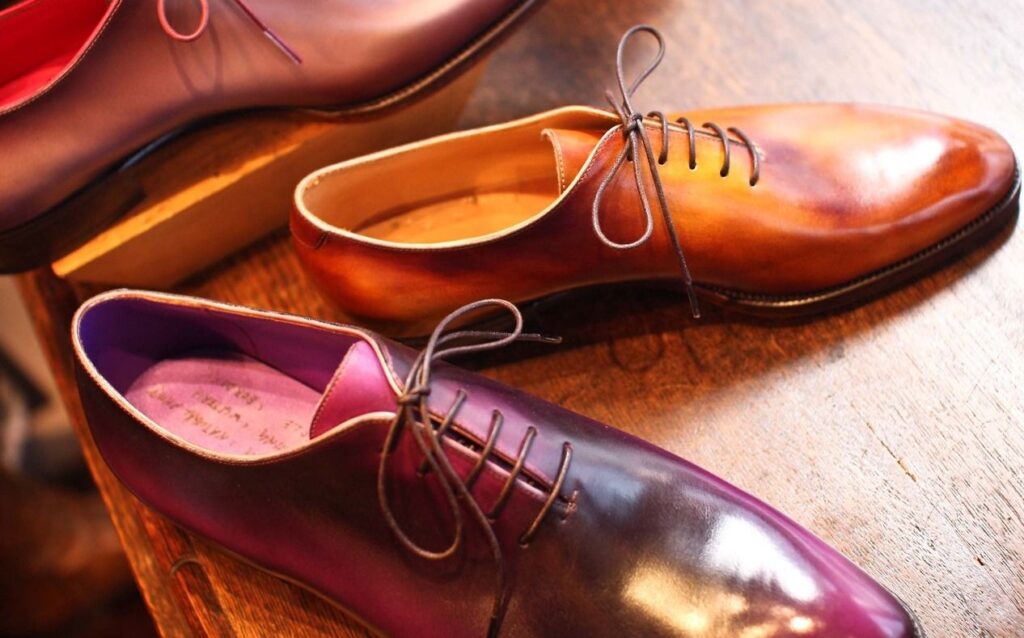
Patina is very popular all over the world, but Japan’s aesthetic of dress shoes is still very conservative. Do you think patina will become more popular in Japan?
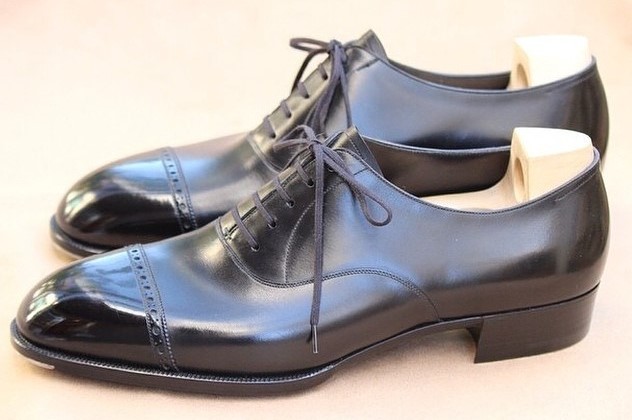
Yes, I believe so. Because from the needs of my customers and more and more people are becoming patina artists.
Have you ever thought about studying abroad, such as France and Italy?
I’ve thought about it, but there are many things in Japan that inspire me, and I can use them all first.
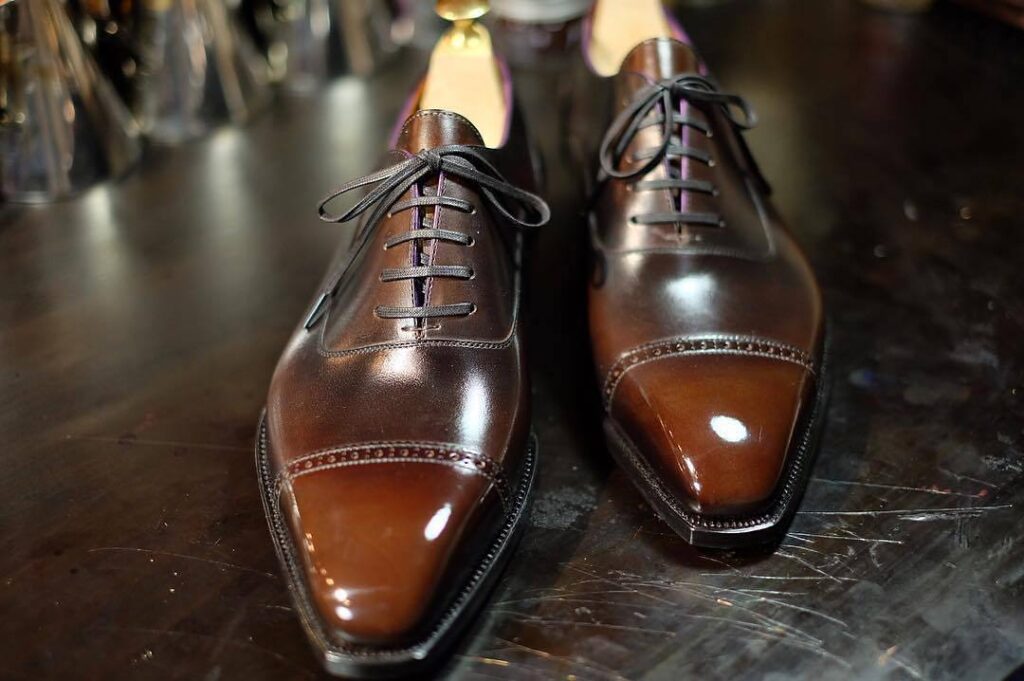
In addition to patina, do Floriwonne shoes have any other characteristics?
Our craft is also characteristic. Forefoot is Goodyear welted construction while the waist Blake stitched, which provides a narrower waist.

What’s your favorite style?
My most recommended style is the Wholecut, which is also the only RTW model. Only simple pattern can fully enjoy the beauty of patina. The last is made by myself, and my appeal is to better reflect the shadows from different angles, so that the patina is more obvious.
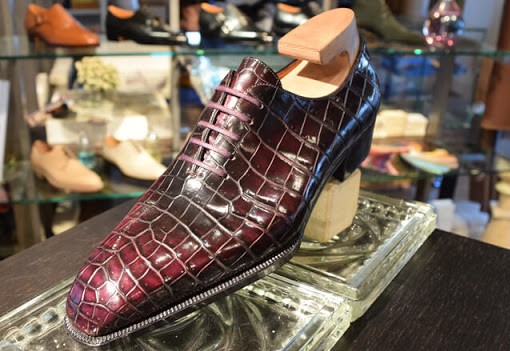
Comfort is also taken into account, and I am concerned that there is no pressure at the joint of the thumb. The lining is also very soft. I wear my own shoes every day, looking for areas for improvement.
Is last-making also self-taught?
At World Footwear Gallery, a lot of shoemakers are there, and I learned from them.
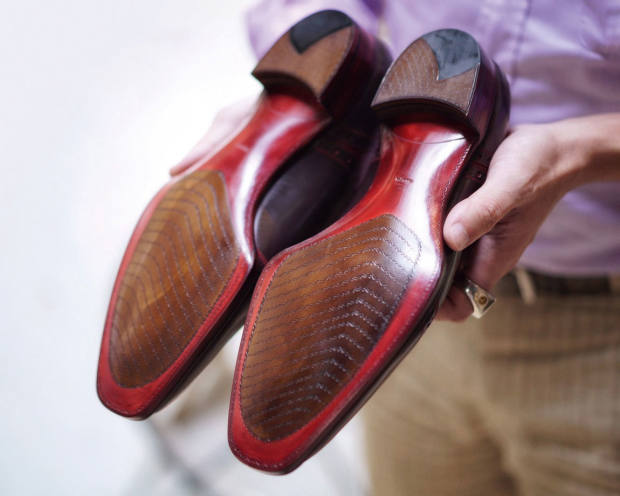
What did you feel when you were learning last making?
People who make shoes generally learn to make lasts first, and then learn tones and materials, but I do the opposite. I think that the relationship between material (color) and style is inseparable, there are colors that do not fit with this style, and some lasts and some colors do not fit. Therefore, through trial and error, I made the last better expression of my color.

When talking about patina, people think of Berluti, what is the main difference between yours and its?
I think Berluti’s influence was huge, it made people recognize patina. Not only Berluti, but many French brands have a high level of patina.
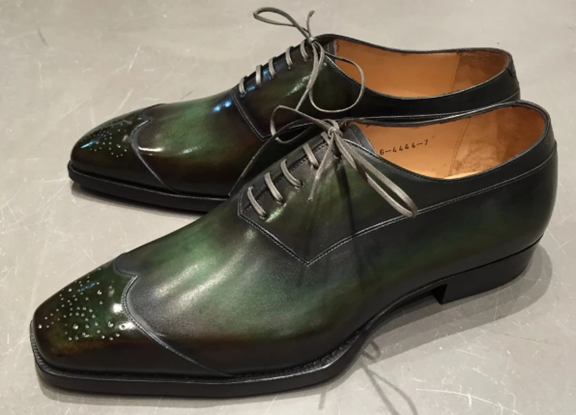
I also develop original products in patina. What I want to express is that color and depth of color will change interestingly over time.
The change of light produces a change in the color of shoes, which is also one of the charms of patina. When you put your shoes in the light, the bright place will become thinner, and when you put it in the dark and shady place, that area will be visually thickened.
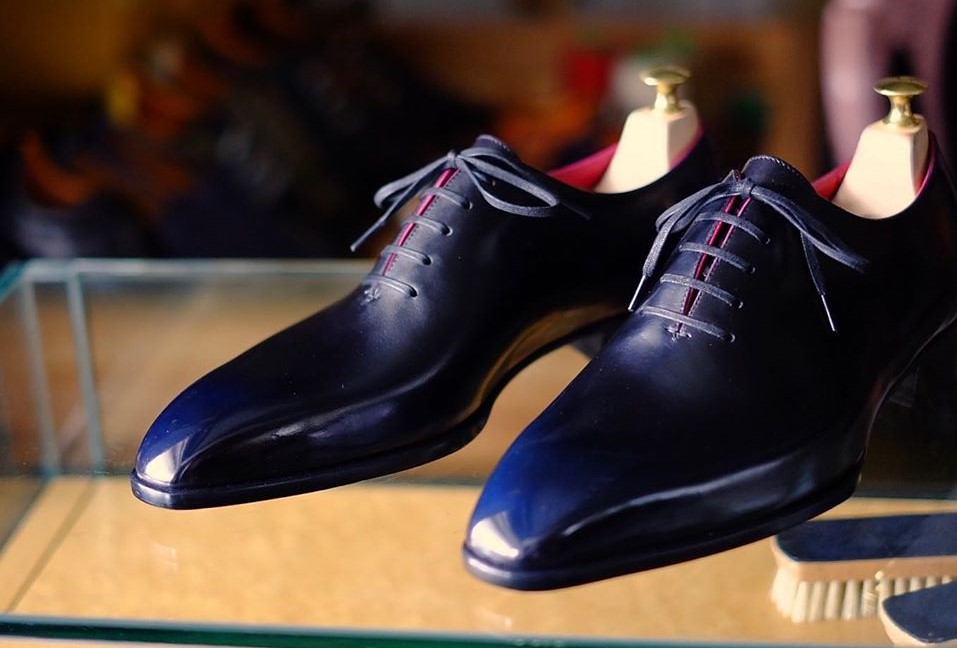
Artists in Paris mainly use brushes to patina, while I use my hands. More fine colors can be expressed with your hands.
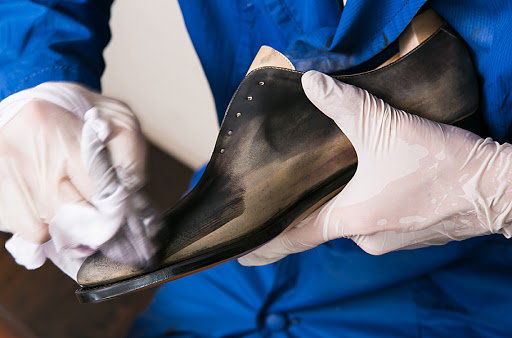
I think my most fundamental idea is the harmony of shoes and colors.
Do you recruit apprentices or teach patina?
Yes, I have a patina course in the studio.
The vast majority of Japanese dress shoe brands have no interest in overseas markets, what about Floriwonne?
Actually, I don’t have it yet, let’s see what happens in the future.
What are the goals for the future?
I want to continue to make some shoes that I think really look good.
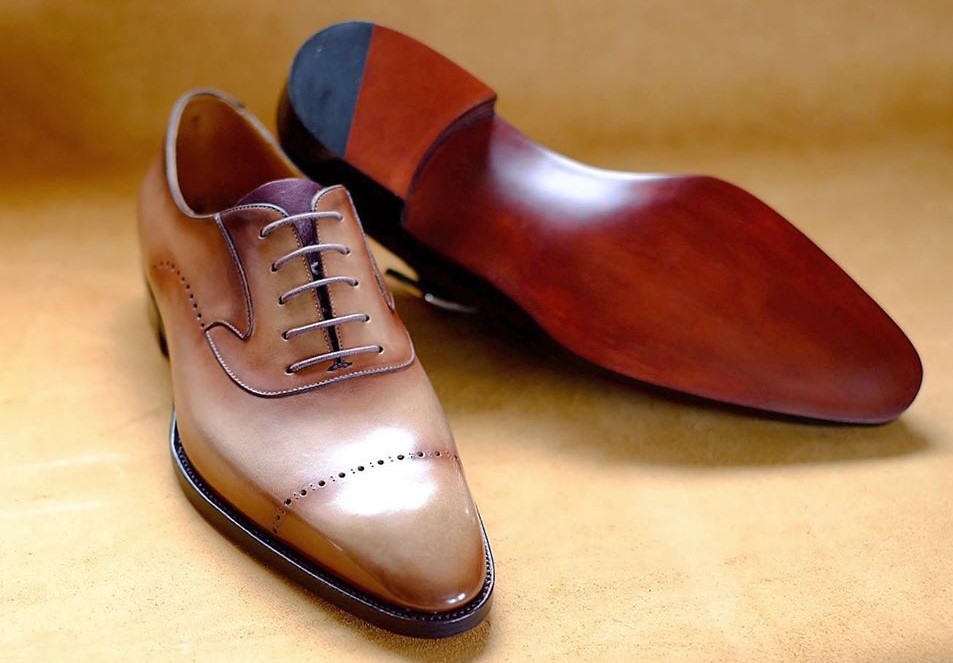
Price and Delivery Time
RTW:80000 JPY
MTM/MTO:95000 JPY, delivery in 4-6 months
